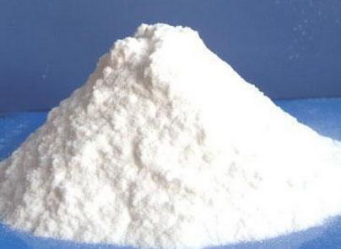Several key technologies for metal laser cutting are integrated technologies of light, machine and electricity. The parameters of the laser beam, the performance and accuracy of the machine and the CNC system directly affect the efficiency and quality of the laser cutting. Especially for parts with high cutting precision or large thickness, the following key technologies must be mastered and solved: Focus position control technology: One of the advantages of laser cutting is that the energy density of the beam is high, generally >10 W/cm2. Since the energy density is proportional to 4/πd2, the focal spot diameter is as small as possible to produce a narrow slit; and the focal spot diameter is also proportional to the focal depth of the lens. The smaller the focal depth of the focusing lens, the smaller the focal spot diameter. However, the cutting has a splash, and the lens is too close to the workpiece to damage the lens. Therefore, the focal length of 5 〃 to 7.5 〃 (127 to 190 mm) is widely used in industrial applications of high-power CO2 laser cutting. The actual focal spot diameter is between 0.1 and 0.4 mm. For high quality cuts, the effective depth of focus is also related to the lens diameter and the material being cut. For example, a carbon steel is cut with a 5 inch lens, and the depth of focus is in the range of +2% of the focal length, that is, about 5 mm. It is therefore important to control the position of the focus relative to the surface of the material being cut. Concerned about cutting quality, cutting speed and other factors, in principle, the metal material <6mm, the focus is on the surface; >6mm carbon steel, the focus is above the surface; >6mm stainless steel, the focus is below the surface. The specific dimensions are determined experimentally. There are three easy ways to determine the focus position in industrial production: 1. Printing method: The cutting head is moved from top to bottom, and laser beam printing is performed on the plastic plate, and the minimum diameter of the printing is the focus. 2. Slanting plate method: use a plastic plate placed at an angle to the vertical axis to pull it horizontally, and find the minimum point of the laser beam as the focus. 3, blue spark method: remove the nozzle, blow the air, the pulse laser on the stainless steel plate, so that the cutting head moves from top to bottom, until the blue spark is the focus. For the cutting machine of the flying light path, due to the divergence angle of the beam, the length of the optical path is different when the proximal end and the distal end are cut, and the beam size before focusing has a certain difference. The larger the diameter of the incident beam, the smaller the diameter of the focal spot. In order to reduce the change of the spot size caused by the change of the beam size before focusing, the manufacturers of laser cutting systems at home and abroad provide some special devices for users to choose: (1) Parallel light pipe, which is a commonly used method, that is, a parallel light pipe is added to the output end of the CO2 laser for beam expansion processing, the beam diameter after the beam expansion becomes larger, and the divergence angle becomes smaller, so that the cutting work is performed. The beam sizes near the near end and the far end are close to each other. (2) Adding a separate moving lens lower shaft to the cutting head, which is two independent parts from the Z axis that controls the nozzle to material surface distance (stoff). When the machine table moves or the optical axis moves, the beam also moves from the proximal end to the distal F axis, so that the spot diameter remains the same throughout the processing area after the beam is focused. Concerned about surprises Label: Focus position control technology for metal laser cutting machine Previous: Analysis of the five major characteristics of pump selection Next: Analysis of the characteristics of stainless steel precision casting processing technology Carboxymethyl Cellulose is a carboxymethyl group substituted by cellulose. According to its molecular weight or substitution, it can be completely dissolved or insoluble polymeric, which can be used as a weak acid type cation exchanger to separate neutral or alkaline proteins. Can form high viscosity carboxymethyl cellulose of colloid, solution, adhesion, thickening, flow, emulsifying dispersion, informs, water retention, protective colloid, film forming, acid, salt, clouding resistance and other properties, and physical harm, so in food, medicine, daily chemical, oil, paper making, textile, construction and other fields is widely used in production.
Carboxymethyl cellulose for non-toxic tasteless white flocculent powder, stable performance, easy to dissolve in water, its aqueous solution is neutral or alkaline transparent viscous liquid, soluble in water soluble glue and other resin, insoluble in ethanol and other organic solvents. CMC can be used as binder, thickener, suspension, emulsifier, dispersant, stabilizer, sizing agent, etc.
Carboxymethyl Cellulose Carboxymethyl Cellulose Cmc,Carboxymethyl Cellulose,High Viscosity Cmc,Ceramic Grade Carboxymethyl Cellulose Hebei pancan trading co. LTD , https://www.hbpancanshangmao.com
